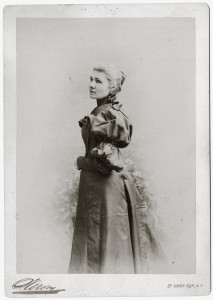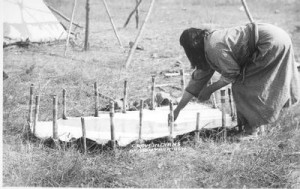
In 1909 the Anaconda Standard ran an article called “The Uplift of the Indians.” It argued that Indians could be brought from their “untutored, childlike state” and transformed—through education, private property ownership, and conversion to Christianity—into productive American citizens. Perhaps no Montanan of her generation better exemplified this assimilationist ideal than Blackfeet descendent Helen Piotopowaka Clarke. While Clarke’s remarkable personal and professional accomplishments earned her great respect and admiration, they also revealed the persistence of anti-Indian prejudices at the turn of the twentieth century.
Helen was born in 1846 to a prominent Scottish-American, Malcolm Clarke, and his Blackfeet wife, Cothcocoma. She spent most of her childhood at a convent school in Cincinnati and returned to Montana just a few years before a group of Blackfeet men murdered her father in 1869. Later that year, Helen’s brothers participated in the Baker Massacre during which troops, ostensibly on a mission to capture Malcolm Clarke’s killers, slaughtered a peaceful and unassociated Blackfeet camp.
Following these tragic events, Helen Clarke moved back east and had a brief but successful acting career in New York. In 1875, she returned to Montana, where attorney and family friend Wilbur Sanders found her a teaching position in Helena. Not everyone in Helena was happy with her hire. Elizabeth Chester Fisk, whose husband edited the Helena Herald, withdrew her children from school because she objected so strenuously to Helen’s mixed ancestry. However, enough Helenans were accepting of the refined, devoutly Catholic, and talented woman that they elected Clarke county superintendent of schools in 1882. She held the position for three terms—one of the first two women (and only person of Indian descent) to hold elective office in Montana Territory. Continue reading Helen Piotopowaka Clarke and the Persistence of Prejudice
